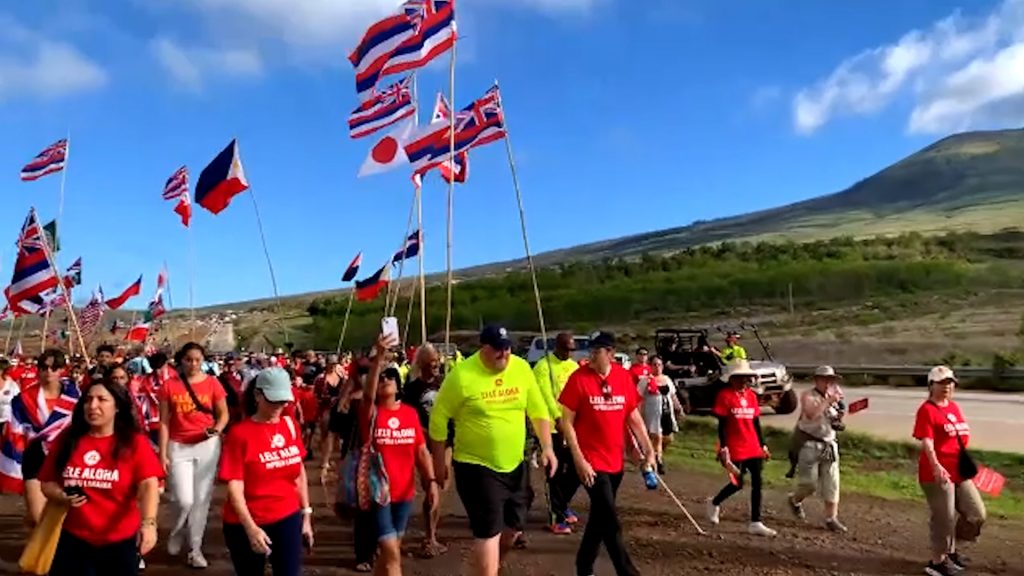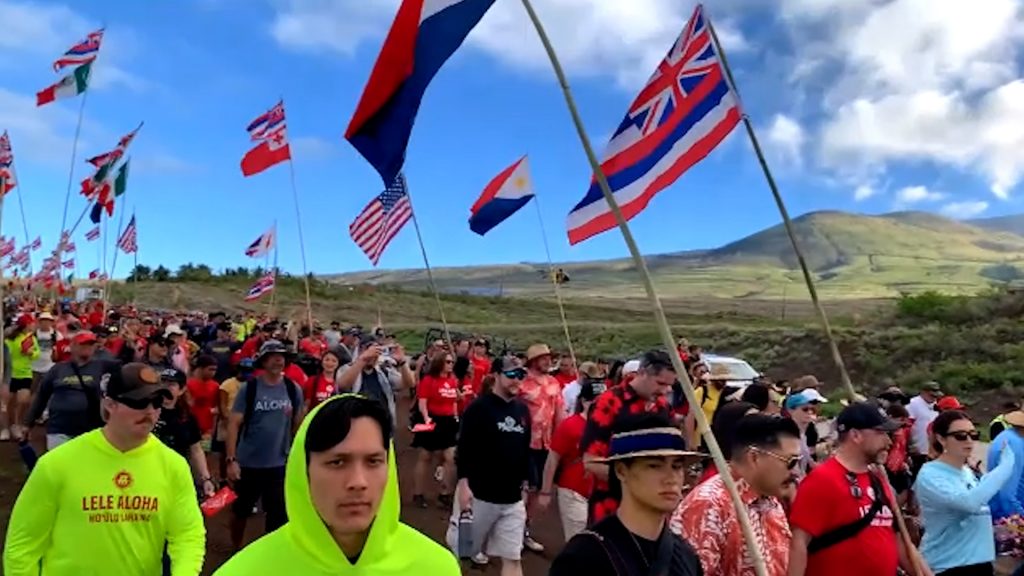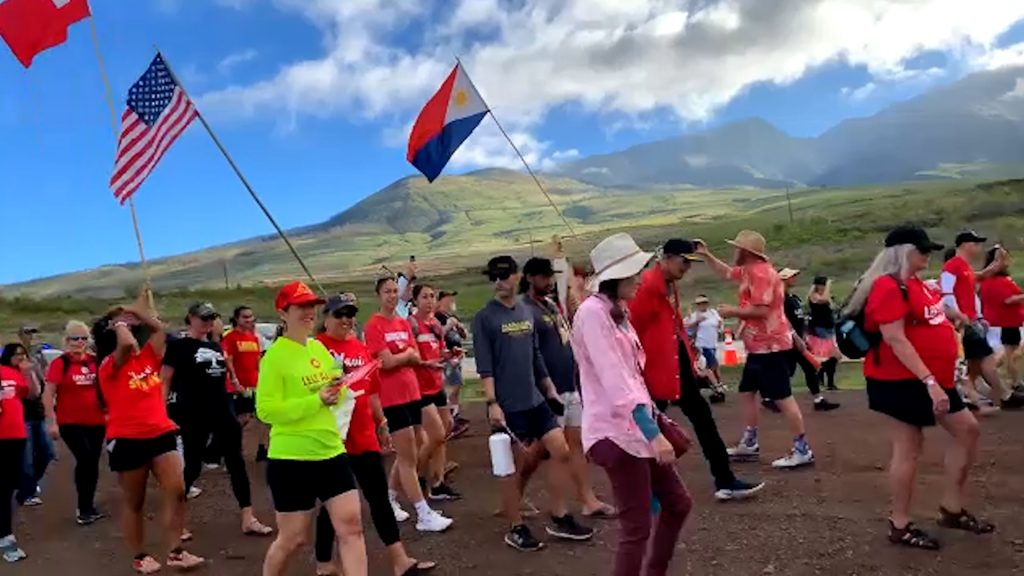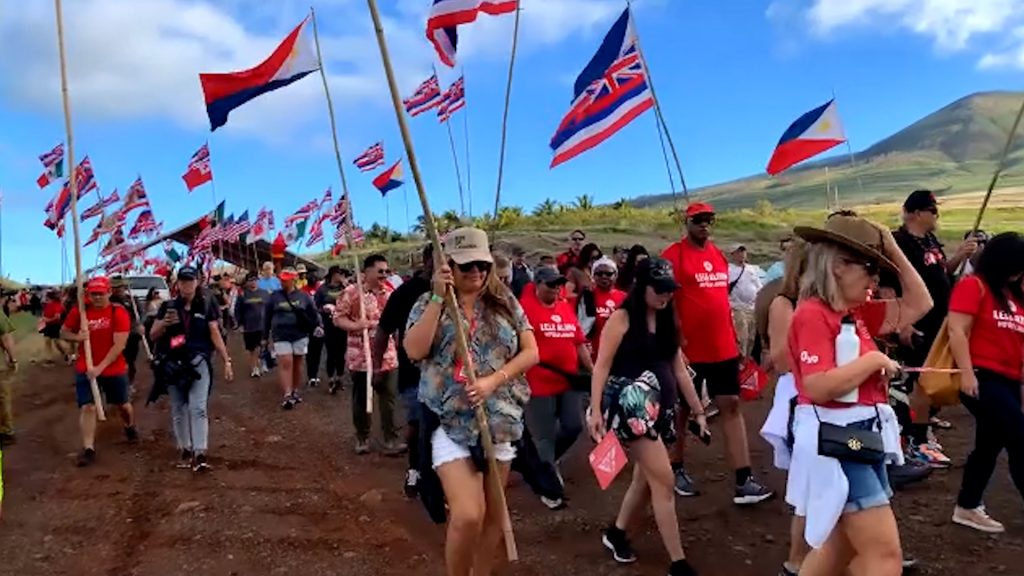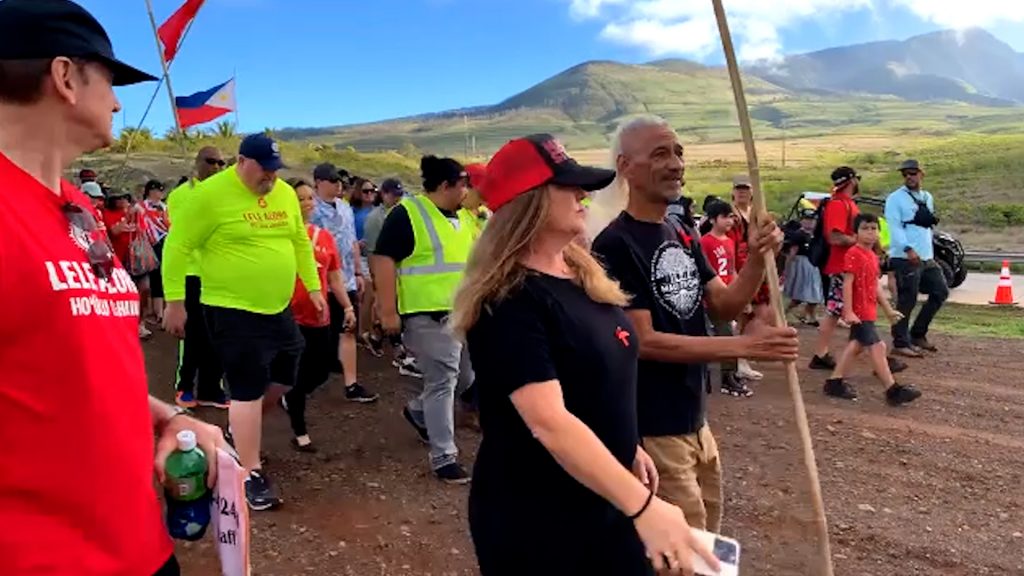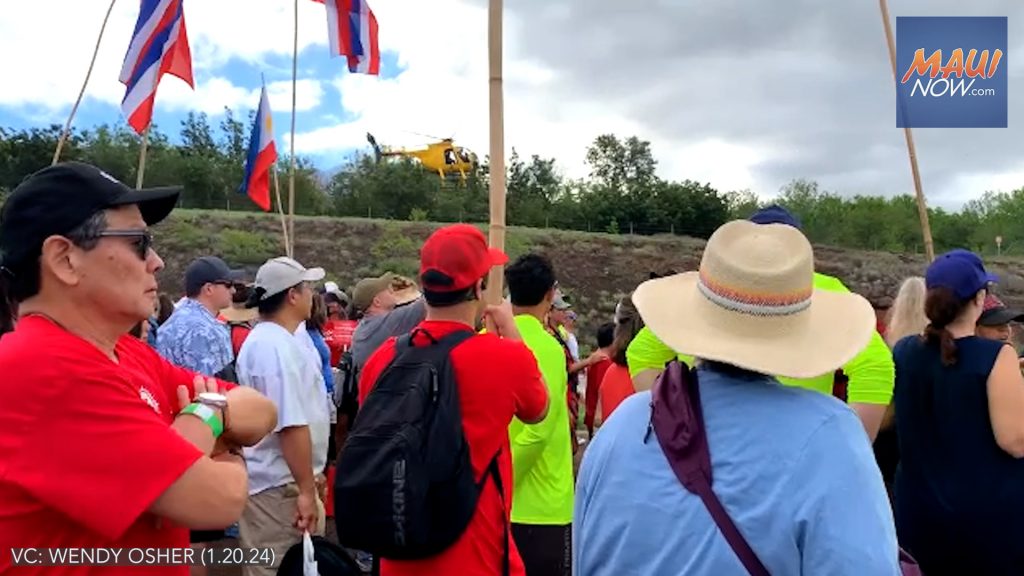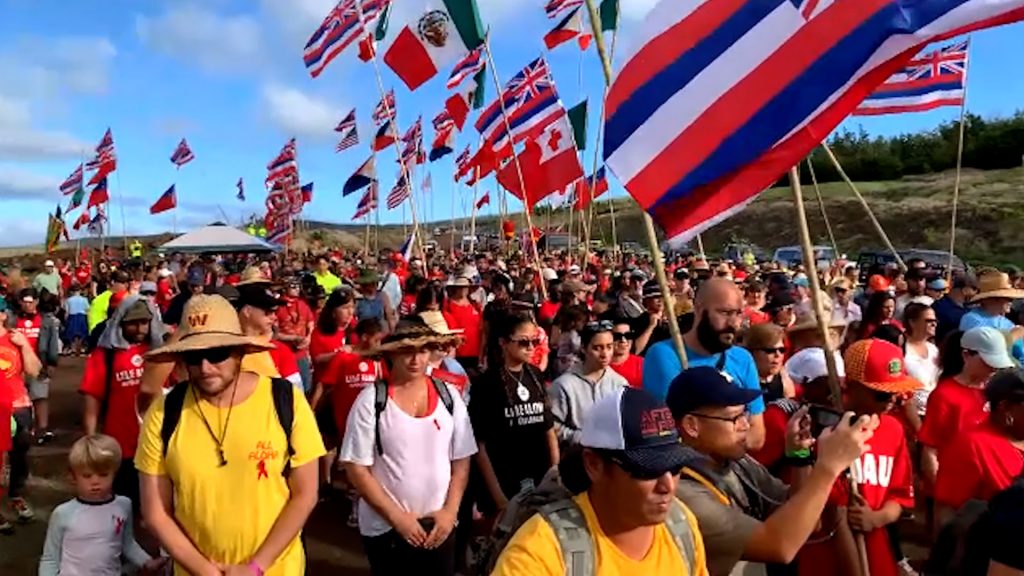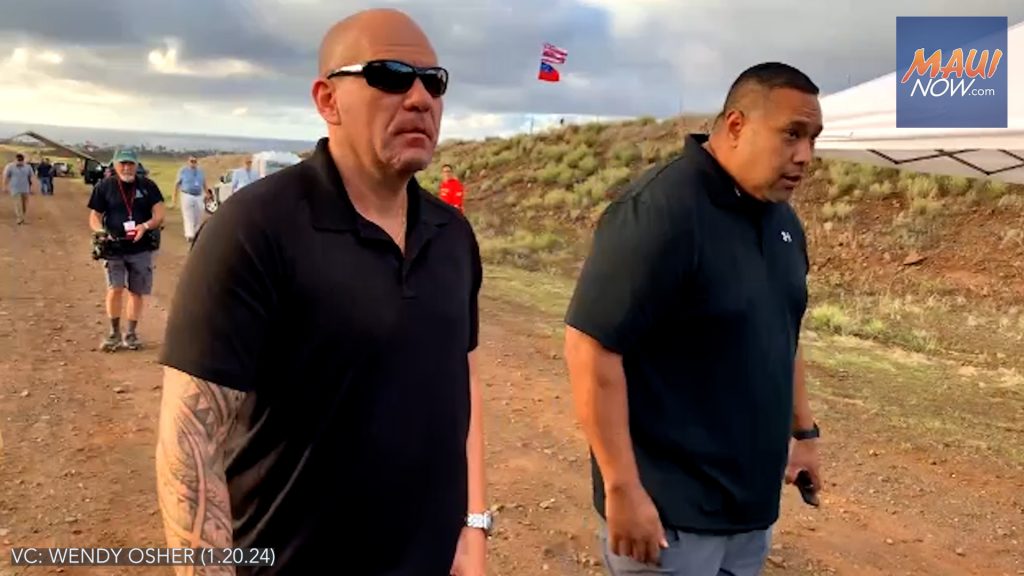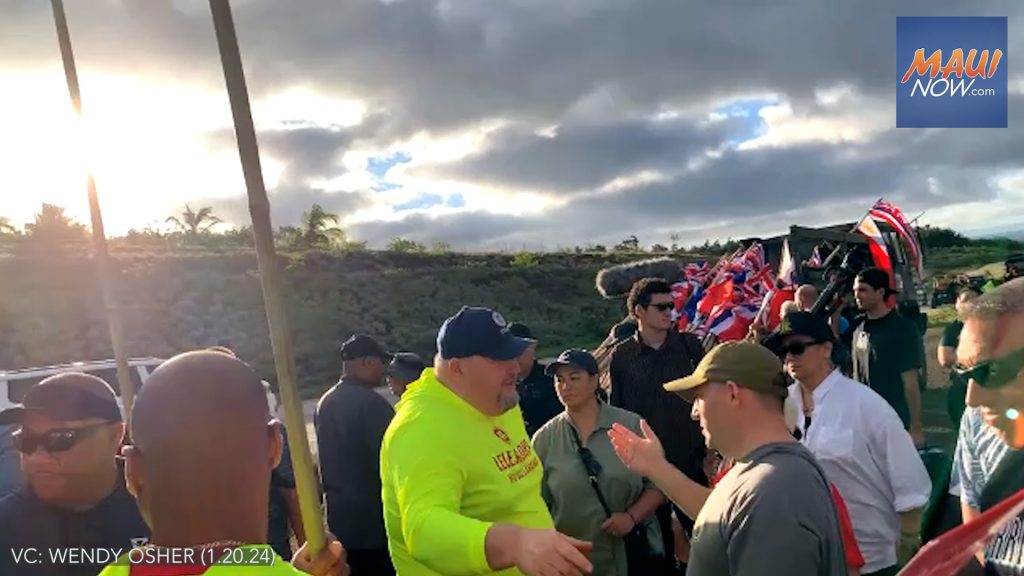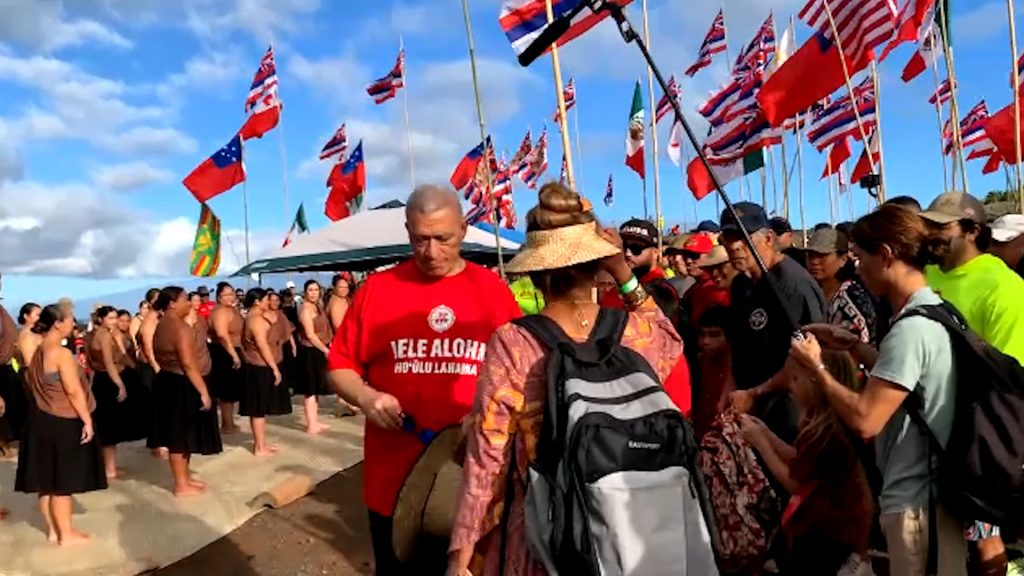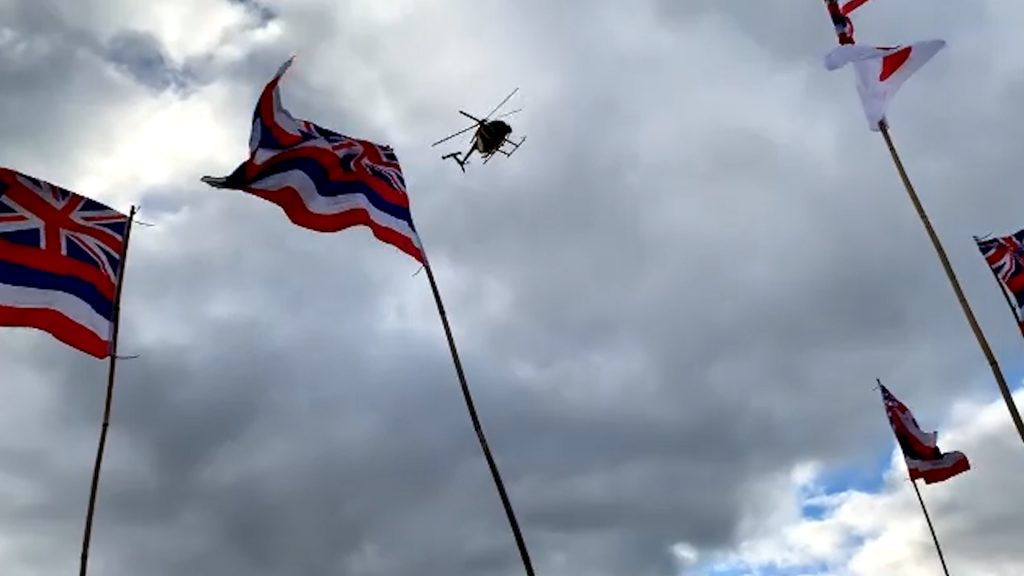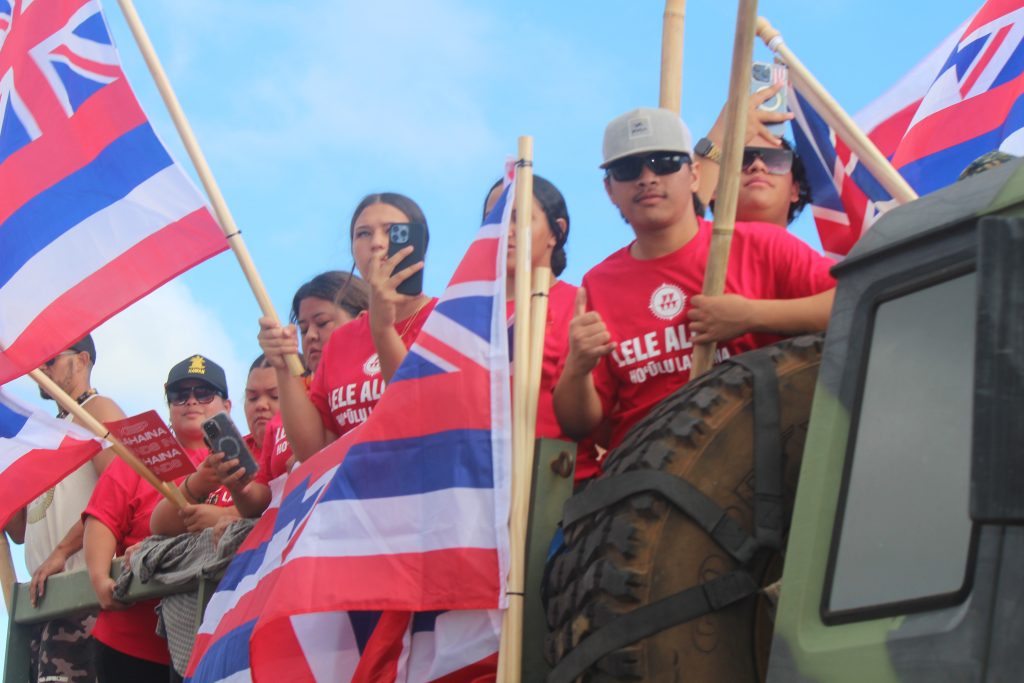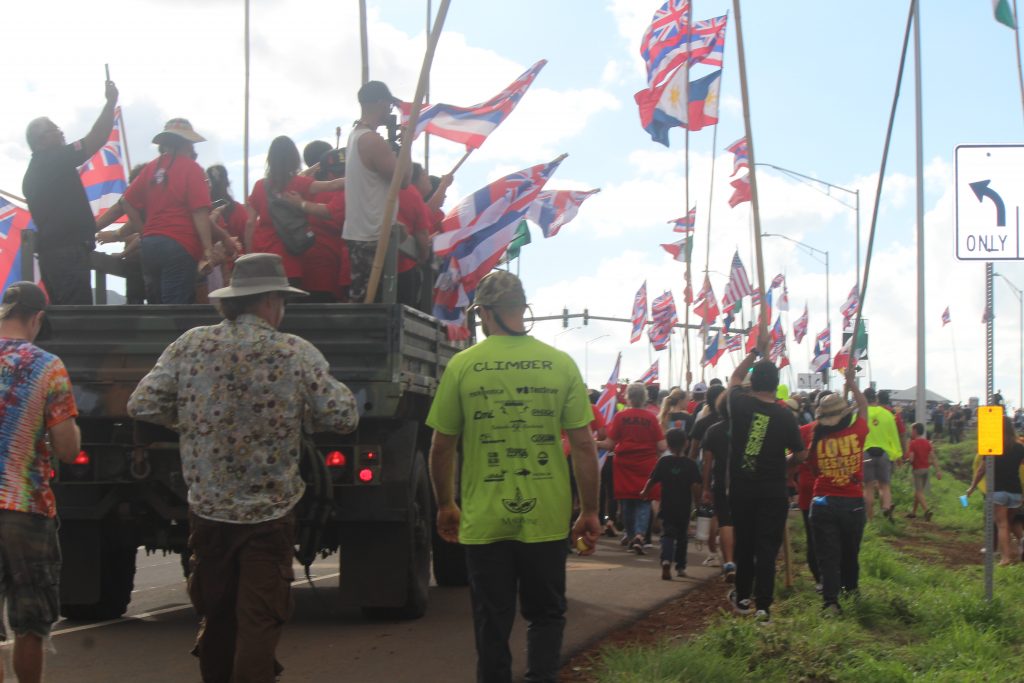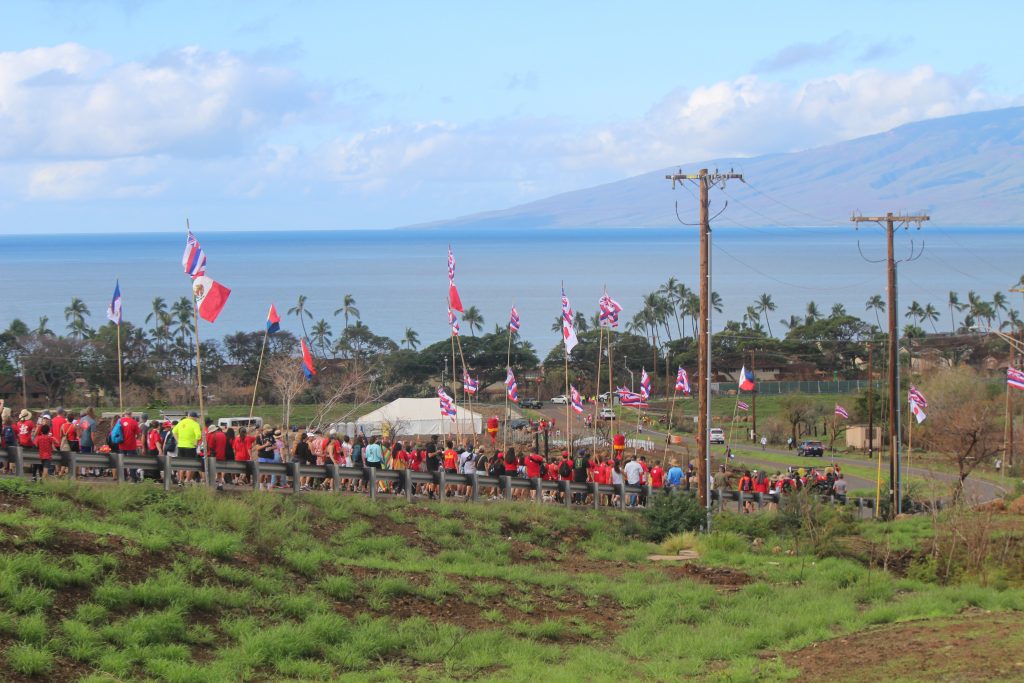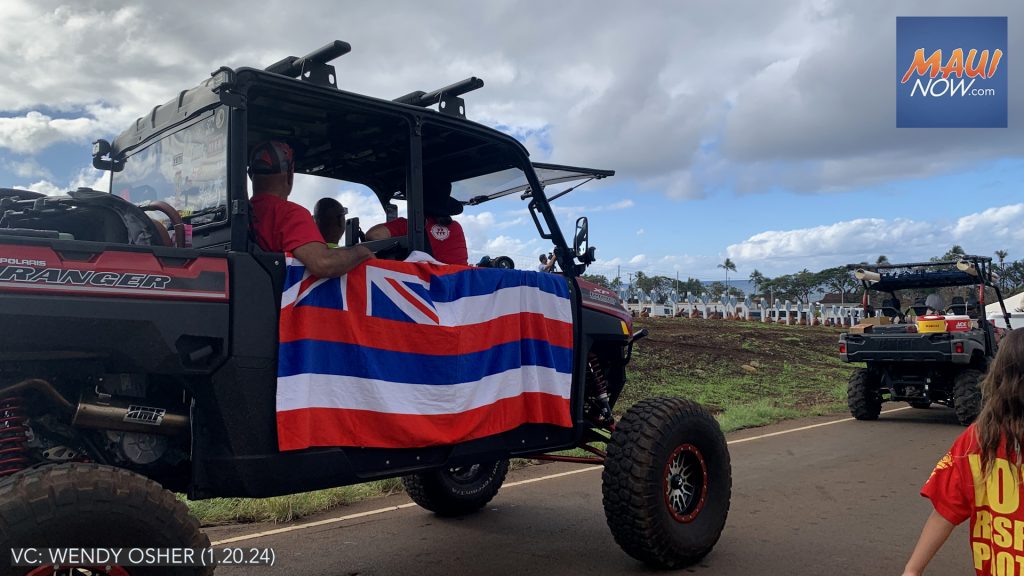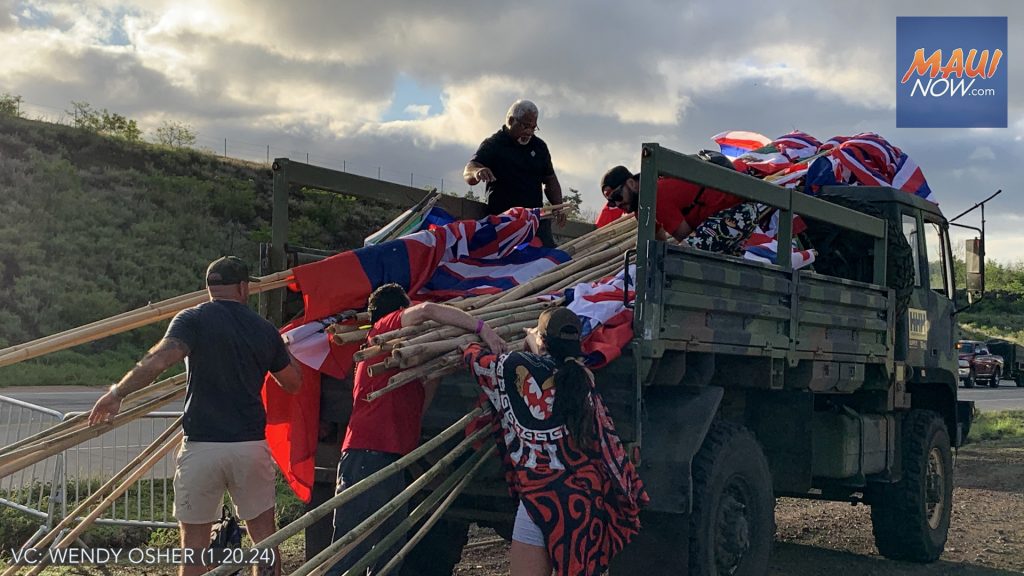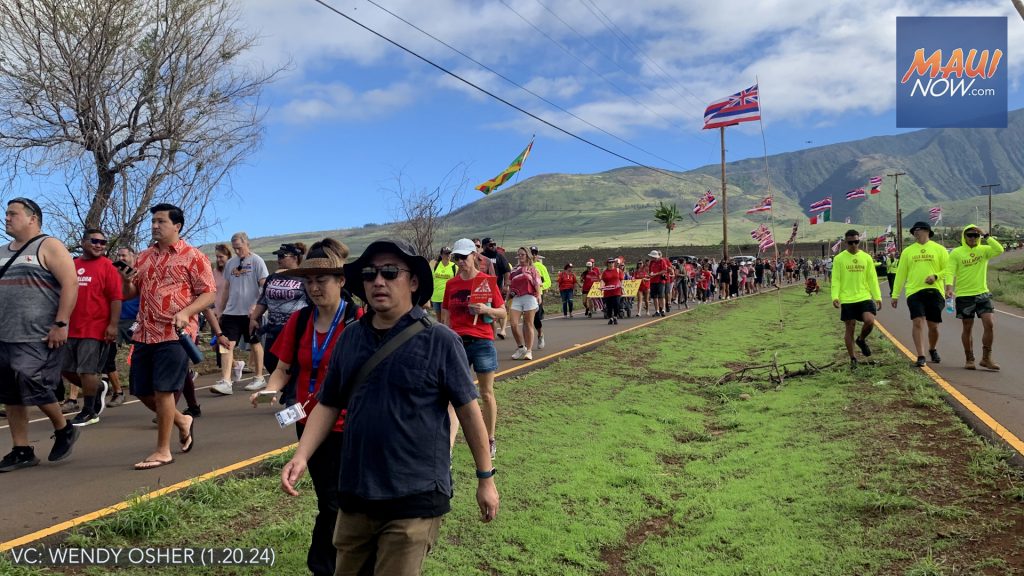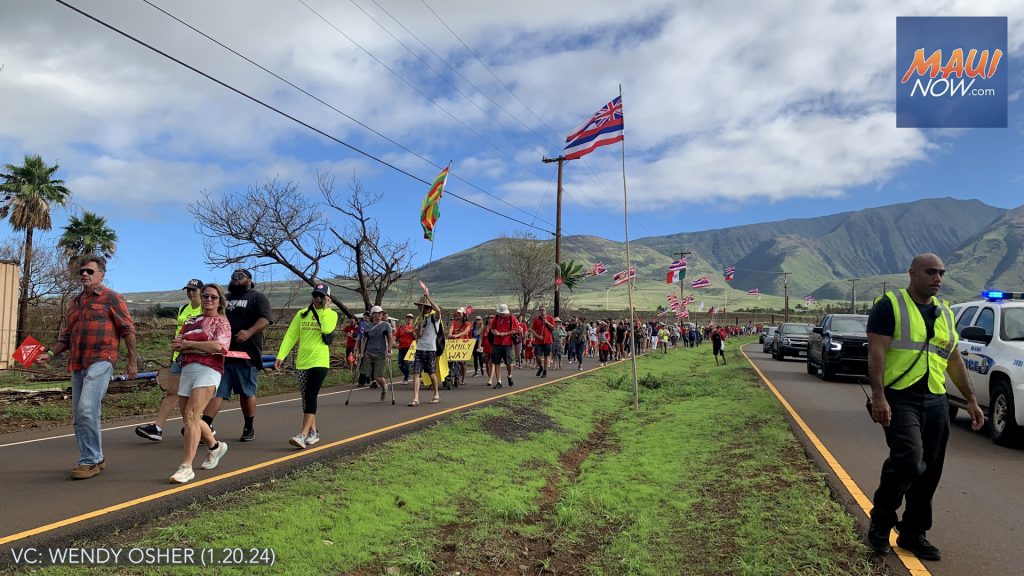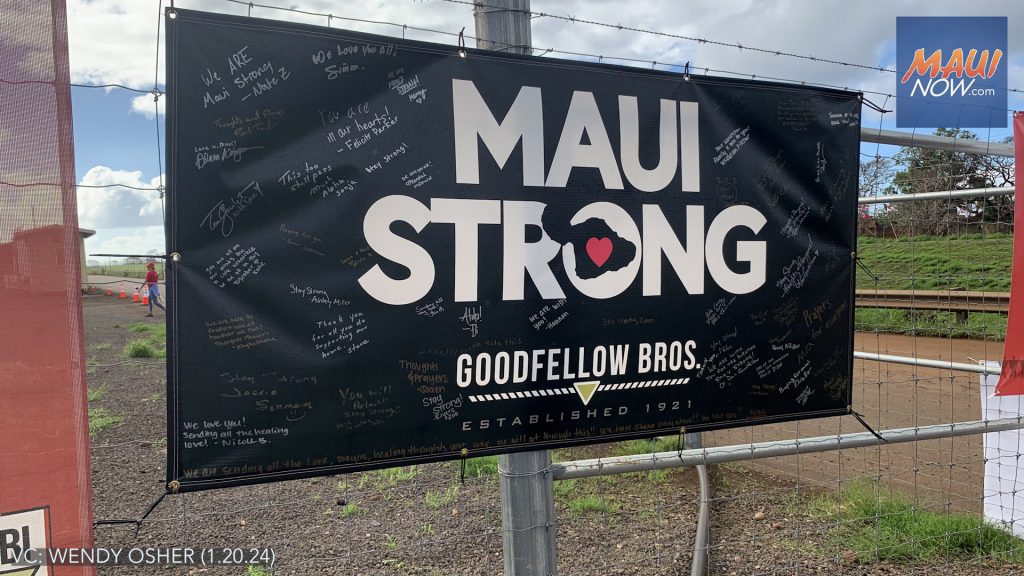Unity Walk on Maui draws thousands for healing and recovery following Lahaina wildfires
Prayer, ʻoli (chanting) and protocol were practiced during the Lele Aloha Hoʻūlu Lahaina Unity Walk held Saturday morning in West Maui. A procession and gathering of thousands of individuals started at the Lahaina Bypass and headed south along the Honoapiʻilani Highway, ending at Launiupoko Beach Park.
Lele Aloha, a nonprofit organization, was founded by Lahaina resident Archie Kalepa in the aftermath of the Lahaina fires. The event’s goal was aimed at bringing the community together in a show of support for those affected by the fires through the collective healing and recovery process.
“We need to come together all of Hawaiʻi. We have the opportunity to rebuild Lahaina in a pono way,” said Kalepa. “Lahaina will take the lead but we need everyone’s support.”
“Lahaina is my home, and as many times as I have walked along the burn scars, today is a different day. The depth of our grief and the warmth of our aloha is overwhelming. Today marks a different kind of point in the history of this place,” said Archie Kalepa.
Kalepa said the event extends a call to the State of Hawaiʻi and the world, urging them to support Lahaina’s progress and recovery. “There are many answers that we do not have today, but I do know this, deep in my naʻau—we will not get there alone. We need the kind of strength and the kind of power that we can only find in one another, in unity,” he said.
“It is an opportunity for individuals to demonstrate solidarity and contribute to the well-being of the Lahaina community,” organizers said.
Among those in attendance were Governor Josh Green M.D., US Rep. Jill Tokuda, FEMA Regional Administrator for Region 9 Bob Fenton, Maui Mayor Richard Bissen, former Mayor Michael Victorino, Maui Police Chief John Pelletier, fire department personnel, Maui Councilmembers and members of the Hawai’i legislature.
Special stops along the route included pule (prayer) led by Anakē Hōkῡlani Holt at the Lahaina Bypass, protocol with Hālau Ke’alaokamaile under the direction of Nā Kumu Kealiʻi Reichel and Henohea Kāne above Mokuʻula, and protocol with Nā Kumu Pueo Pata & Kuʻulei Palakiko at Ahupuaʻa o Lahaina.
Palakiko and her family lost their home five years ago in the 2018 fire that affected the Kauaʻula and Lahaina areas. In the latest fire, Palakiko’s mother and sister lost their home.
“All of us have been doing a lot of work to ensure that our friends and family are as comfortable as possible,” said Kumu Pata, “and through the gift of aloha, even if we’re not related to somebody, we can begin to place ourselves in their shoes to see what they are going to need and what can we do to help.”
“I’m so proud that Maui has come out so strong,” said Kumu Pata. He and his haumana (students) of Hālau Hula ʻo Ka Malama Mahilani named each of the various ahupuaʻa that were impacted by the Aug. 8 wildfires.
The pahu (drum) used in the ceremony was created by Palakiko’s uncle and master carver Keola Sequeria of Lahaina. It was crafted from the stump of an ulu tree that once stood at the old Lahaina prison. Sequeria is also credited as the Kahuna Kalai Waʻa or master carver of the Maui canoe Moʻolele.
The Maui Fire Department’s Air One helicopter provided a steady presence during the event, making several low passes over the burn zone and surrounding community.
Kauaʻula Valley resident Keʻeaumoku Kapu said the importance of the event is to unify everyone. “Despite all of our issues that we are going through and the months ahead on how things are going to be done, I think the most important thing for us is to ease the minds of our community, especially those that are suffering. This march is really important to unify everybody on the same page.”
“Because of a lot of frustrations with politics, a lot of people are coming for closure and clarity, and theyʻre coming to see if we are united as one so we can go forward in the right direction,” said Kapu.
“Now is the time to unify,” said Kapu.


State Sen. Jarrett Keohokalole (windward Oʻahu) said he came to support the Lahaina community in their efforts to rebuild and maintain leadership over how Lahaina recovers.
“Just yesterday, I filed four different pieces of legislation that were developed by the Lahaina community through the organizing process that set up a framework that gives the community a little more control in how the redesign and rebuild happens,” said Sen. Keohokalole. “There’s also issues around water, around resiliency and around mitigation of fire hazards and preparation for natural disasters—because Lahaina is not the only community in the state that is vulnerable to these kind of increasing number of natural disasters.”

Lahaina resident Makalapua Kanua said, “Today is all about our community. It’s all about Lahaina. Although we had such a devastating experience for our community, this is how we uplift one another—we come together in one voice, in one mind. When things are pono, when things are in order, ke akua (God) first. We have our kūpuna (elders/ancestors). We have our makua (parents), our ʻōpio (youth) and our keiki (children). So, as you can see today, that’s what it’s about. This is what the unity walk is all about.”
“Many of those who went hāpai (carry/support) our community and help to lift us up are actually here,” said Kanuha, thanking those who put their hands into supporting the community of Lahaina.
The walk is followed by a family-friendly program and lunch at Launiupoko Beach to foster a sense of community and togetherness. Organizers say this aligns with Lele Aloha’s mission to honor Hawaiʻi’s rich genealogy, to love and protect natural resources, and community regeneration beginning with Lahaina.
Governor Josh Green, M.D. posted a video to his social media on Saturday afternoon calling the walk “peaceful, collaborative and thoughtful.”
“We will announce that over 1,000 units have been moved from short-term to long-term. In the coming days, we’ll announce new ideas to get people to sell to local families. But it was this peace march which inspired so many of us to be together again,” said Gov. Green.
Live event stream provided by ʻŌiwi TV is available HERE.





















